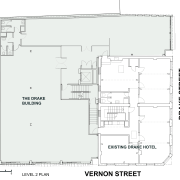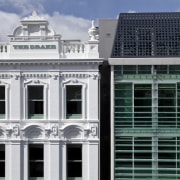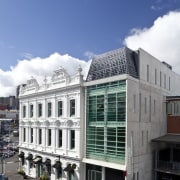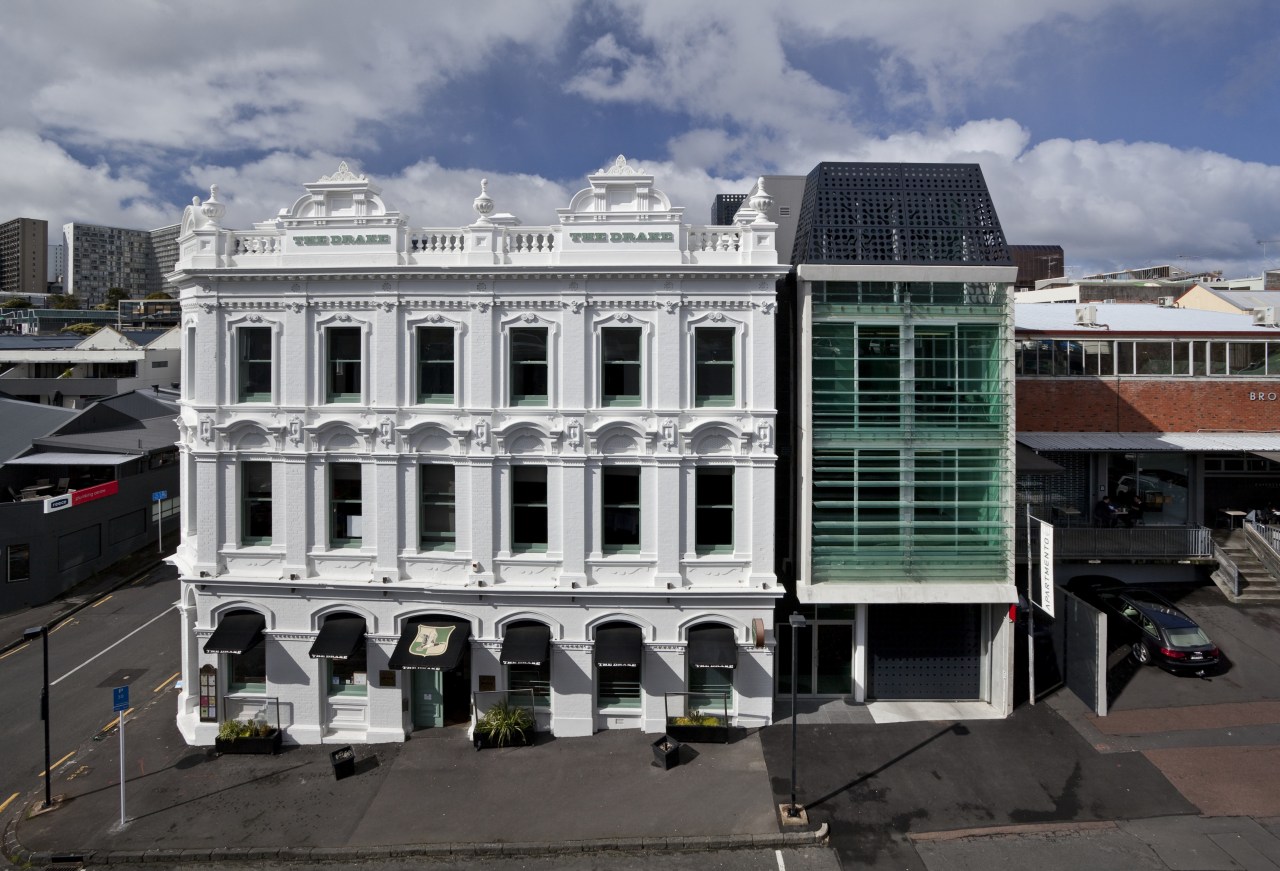Changing face of the cBD
The architectural fabric of our inner cities is constantly subject to change. But increasingly, new insertions are designed to respect, rather than mimic, the heritage character of existing buildings
With inner-city land at a premium, any new building in the CBD invariably needs to sit cheek by jowl alongside older buildings, some of which may well be heritage listed. For many years, it was common to see new buildings mimicking the architectural features of neighbouring buildings, but today there's a move towards a more honest design approach.
Architect Colin Leuschke of Leuschke Group, who designed this office building next to the Drake a historic hotel in inner-city Auckland says it was important that the new building would read as a contemporary 21st-century structure.
"The building, which wraps around the sides and rear of the hotel, was designed to respect the character of the old hotel, but it is not faux or imitative," he says. "It engages with the historic architecture, but in a very contemporary way. For example, the Victorian rhythms and scale of the old building are echoed by the new architecture. Parapet lines are acknowledged and introduced, and the Victorian decorative elements have been translated in the treatment of the Mansard roof-style screens on the new building."
Leuschke says the new horizontal and vertical glass louvre blades on the front facades of the new building also have a rhythm of depth and separation that reflects the patterning of the fenestration on the hotel.
"The new palette of materials is unashamedly contemporary fritted and clear glass, raw concrete, aluminium and stainless steel contrast with the plastered brickwork of the hotel. But their assembly makes them complementary."
The architect says the colour choices also reflect the fact that the buildings are complementary.
"Resene Alabaster was chosen for the hotel facade to give it a slightly surreal quality," he says. "It allows the building to be viewed almost like an architect's whiteboard model. The Victorian elements can also be readily understood."
To provide a contrast to the white, Resene 1/8 Earth Green was specified for the window trim. This echoes the colour of the glass in the new building.
"We also introduced polished black granite reveals to delineate the break between old and new," says Leuschke. "This colour scheme allows the quieter palette of the new building, with its raw concrete, glass and aluminium, to sit comfortably alongside the historic structure.
"Together, the buildings form a composition that celebrates time and context, without compromising the design integrity of either building. In fact, the architecture reinforces the importance of the historic hotel as the centrepiece in this composition, ensuring its viability well into the future."
Leuschke says modern-day functionality has not been sacrificed in the process. To meet seismic regulations, the new building is a completely separate structure, but connects to the old building by a door on the second floor of the hotel. This is at the same level as the third floor of the new building, which has four floors, as opposed to the three floors in the hotel. An elevator and fire exits are shared by both buildings.
Offices on the top floor of the new structure are concealed behind the laser-cut aluminium screens that make up the Mansard roofing element. The screens were designed to ensure the tenants could still enjoy the views.
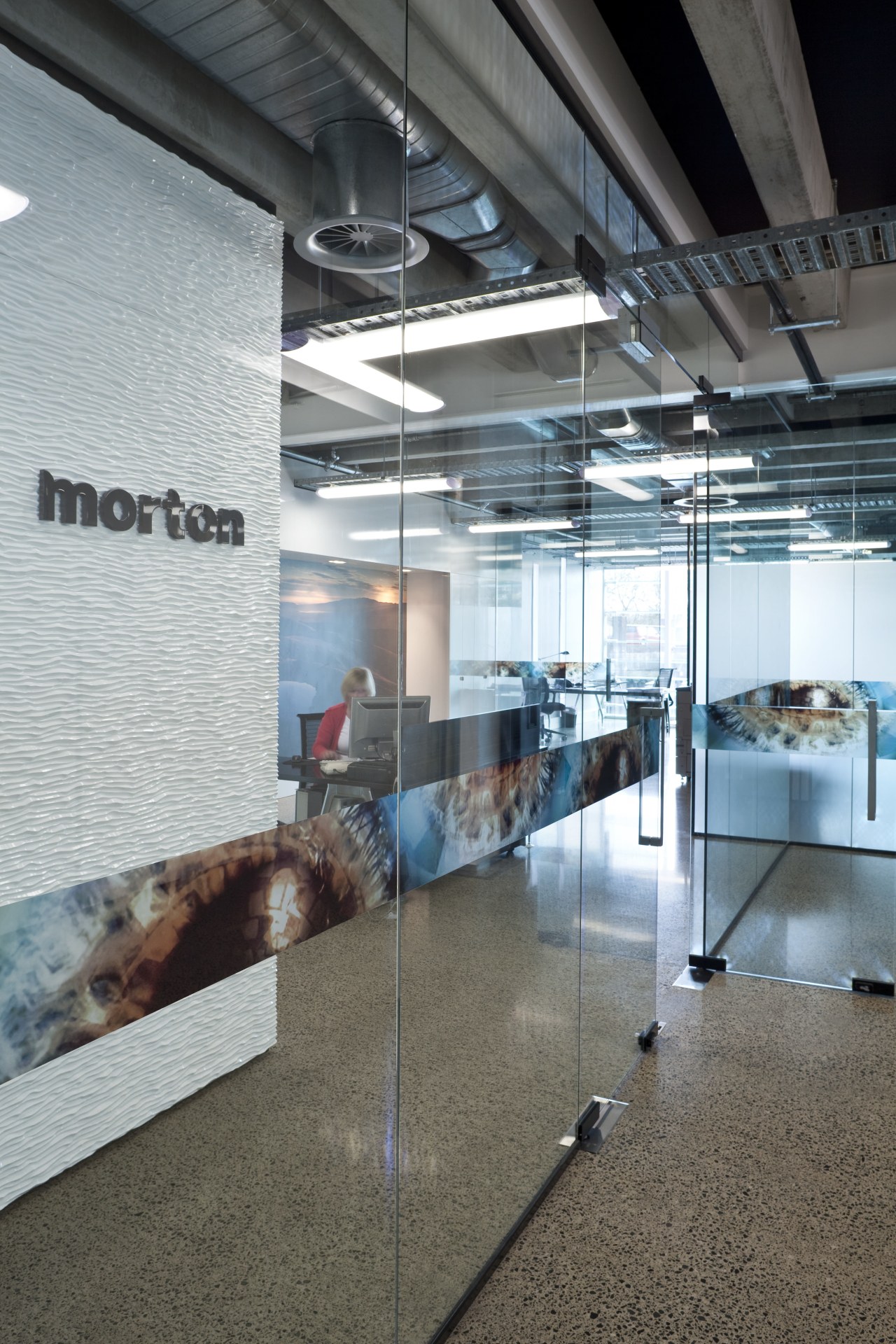
The interior is also flooded with natural light, which was one of the requirements for the building's Four-Star Green Star rating. And materials throughout the building, including high-performance glazing, were chosen for their sustainable, eco-friendly construction and manufacture.
Leuschke Group was also responsible for the fit-out of the Vernon Street entry, as well as the offices for the building's owner, Morton Property Group. The entry passageway incorporates a long, graphic lightbox, and a wall of Aluart metal that has been bent and moulded to provide a three-dimensional sculptural presence.
The Morton fit-out, on the third floor, features exposed services that create a semi-industrial look.
"Exposing these elements gives the space extra volume and adds visual interest," says Leuschke.
"I wanted the interior to express the true nature of the building, so the structural elements are recognised and appreciated rather than concealed. There are no fancy tiles over the raw concrete, for example. Even though a lot of work has gone into the surface treatments and finishes, they reinforce the overall concept of architectural honesty."
Credit list
Client
Architect
Story by: Trendsideas
Home kitchen bathroom commercial design

